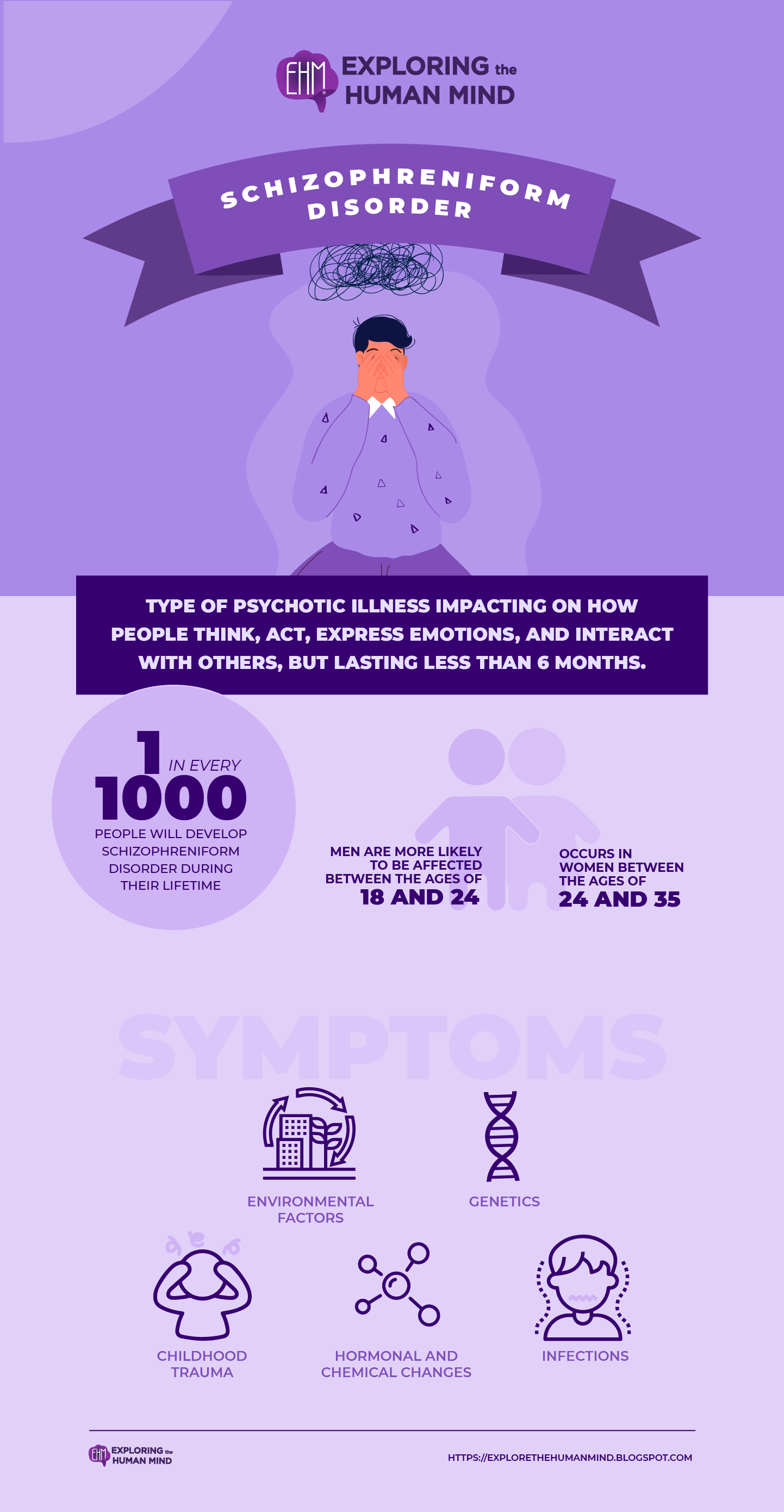Schizophreniform Disorder
If symptoms continue for more than 6 months, doctors will diagnose schizophrenia rather than schizophreniform disorder.
Approximately one in every 1,000 people will develop schizophreniform disorder during their lifetime. The disorder affects both men and women equally, though men are more likely to be affected when they are younger, between the ages of 18 and 24. It usually occurs in women between the ages of 24 and 35.
Symptoms
Like schizophrenia, symptoms may include:
- Delusions (false beliefs that the person refuses to give up, even after they get the facts)
- Hallucinations (seeing, hearing, or feeling things that aren’t real)
- Disorganized speech, such as not making sense, using nonsense words, and skipping from one topic to another
- Odd or strange behavior, such as pacing, walking in circles, or writing constantly
- Lack of energy
- Poor hygiene and grooming habits
- Loss of interest or pleasure in life
- Withdrawal from family, friends, and social activities

vectors by Freepick; graphic design by Vadot
Causes
Doctors don't know exactly what causes these disorders. It's also unclear why some people with no risk factors develop psychosis but not others with multiple risk factors.
Schizophreniform disorder and schizophrenia have similar risk factors. They are as follows:
- Environmental factors: Low birth weight, being born in the winter, preeclampsia in the mother during pregnancy, and living in cities are all associated with an increased risk.
- Genetics: Certain genetic factors increase the likelihood of developing schizophrenia-like disorders. A child has a 40% chance of developing schizophrenia if both parents have it. If one identical twin has schizophrenia, the other has a 46% chance of developing it.
- Childhood trauma: Childhood stress and trauma increase the risk of most mental health conditions.
- Hormonal and chemical changes: A case report from 2021 clarifies the case of a woman who developed schizophreniform disorder after menopause. Hormone replacement therapy improved their symptoms, indicating that hormones may play a role in the disease. This theory has not been thoroughly investigated by researchers.
- Infections: Early exposure to certain viruses, particularly in the uterus, may increase the risk of schizophrenia and schizophreniform disorder symptoms.
People suffering from schizophreniform disorder usually recover in 6 months. If the symptoms do not improve, the person is most likely suffering from schizophrenia, a chronic illness. According to the American Psychiatric Association, approximately two-thirds of people with schizophreniform disorder progress to schizophrenia.
Schizophreniform disorder cannot be avoided. However, early detection and treatment are critical because they can help to limit the person's life, family, and other relationships.
Reference:
WebMD. (2003, February 9). What Is Schizophreniform Disorder? WebMD; WebMD. https://www.webmd.com/schizophrenia/mental-health-schizophreniform-disorder
Villines, Z. (2022, April 28). What is schizophreniform disorder? Medicalnewstoday.com; Medical News Today. https://www.medicalnewstoday.com/articles/schizophreniform#causes






Comments
Post a Comment